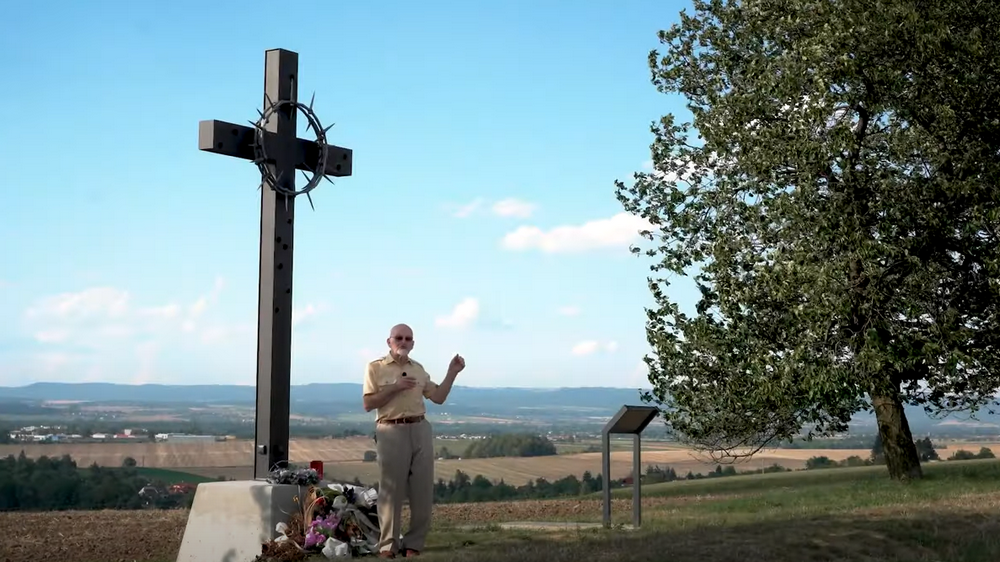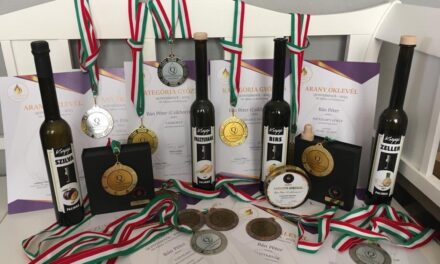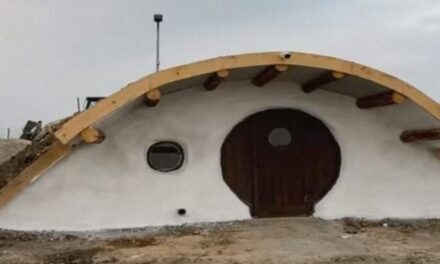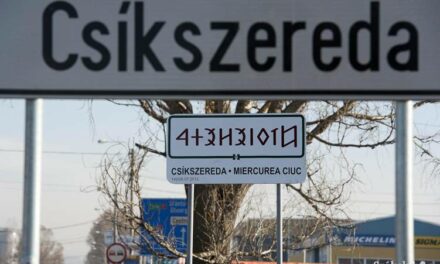A long-awaited recognition has finally happened: the other day, President János Áder awarded the Hungarian Gold Cross of Merit to the Czech historian Frantisek Hybl, who revealed, what's more, buried the ashes of the 120 women (Hungarian and German) and 75 children who they were murdered by soldiers of the Czechoslovak army in the summer of 1945, and later, in 1947, they were burned in a crematorium. Hybl also identified the mass graves of 72 male relatives of these women and children. He created ornamental graves, set up monuments and publishes albums to commemorate what happened.
In October 1947, the remains of 195 women and children of Hungarian and German nationality who were brutally murdered two years earlier in the summer of 1945 were cremated in a crematorium. This was done in order to permanently erase the traces of a mass murder that was already slowly coming to light.
the Czech historian Frantisek Hybl that today we can lay a bouquet of flowers in up to three places in different parts of Moravia in memory of the Hungarian and German victims .
Hungary has finally paid its moral debt for years, when it received high Hungarian state recognition:
the Hungarian Gold Cross of Merit awarded by János Áder was presented to Frantisek Hybl on September 16 at the Liszt Institute in Prague.
Miklós Boros, our country's ambassador in Prague, presented the order of merit to a scientist who excels in the history of education, architecture (beautifying his city and building a tower) and publishing local history works.
Beneš, the instigator
Despite the fact that a Hungarian documentary already dealt with this tragedy in 2005, the series of mass massacres that exhausted the concept of genocide and formed a connected chain extending to the territory of today's Czech Republic and Slovakia, which took place between 1945 and took place in
and during which, two years after the Holocaust, people murdered because of their origin and affiliation were again burned in crematoria.
From the spring of 1945 - among others, Edvard Beneš, the leading Czechoslovak politician de facto exercising the post of president of the republic (although he was practically ineligible to fill it, as he resigned from this post years earlier and was not re-elected by anyone, was practically instigated), the German and Hungarian minorities as a result of his speeches declaring his complete deprivation of rights and calling for the extermination of these ethnic groups - a series of atrocities, completely unprecedented in the history of Europe, began in post-war Czechoslovakia.
Known: Beneš's name is associated with the infamous decrees .
, the brutal persecution and slaughter of the approximately three million German civilian population, which had been living in various smaller and larger settlements for hundreds of years, began in the territory of today's Czech Republic Mass lynchings usually took place in an organized manner. The murders, of which women and children were also victims, were often committed in broad daylight, in the open street. Such was the death march in Brno , where around 1,700 inhabitants of the city were murdered by their Czech compatriots.
In this environment, a group of hundreds of citizens of German and Hungarian nationality from Northern Bohemia left for their home in the Highlands. The group, mostly from Dobsina and Késmárk, consisting exclusively of civilian local residents, was deported during the German rule, in the fall of 1944, mostly against their will, because of the approaching Russian front.
From the spring of 1945, the Czechoslovak authorities set up a special, closed camp near Bratislava, in Bratislava Forest Village. The war had not yet ended when the Hungarian and German-speaking population of Bratislava and its surroundings began to be deported here. The families who were dragged from their apartments never got their properties back. They were kept by the thousands in Pozsonyligetfalu, where these families were put in terrible conditions.
Hungarians and Germans were killed by the hundreds with impunity
At the same time, in the summer of 1945, the soldiers and officers of the 17th Infantry Regiment left Prague for Bratislava on a train carrying soldiers to occupy their new station near Bratislava, in the area of the Ligetfalu camp.
On June 18, 1945, these soldiers - after waiting on the way, in Přerov in Moravia, to continue on - arrived at a common station with the freight wagons carrying German and Hungarian families who were also languishing there. They noticed that the passengers of the other train spoke German and Hungarian. Civilian passenger trains were then diverted outside the town of Přerov. On the night of June 18 to 19, the passengers of the train heading to Bratislava were murdered at the so-called Swedish ramparts, a total of 267 people (120 women, 72 men and 75 children and infants).
The murdered people were buried in a huge mass grave dug by the men of the nearby village.
The regiment then continued its journey towards Bratislava.
Arriving at the Pozsonyligetfalu camp, the soldiers of the regiment - on the orders of the camp's leaders - continued the massacres. Women and children were murdered en masse here as well German-speaking men, women and children fell victim to their murders here. The same perpetrators massacred around 90 members group of Hungarian leventes Most of the murdered boys were 13-17 years old.
Since in 1947 the authorities accidentally unearthed a mass grave in while searching for On the Swedish ramparts near Přerov, the state security and Terezín military units exhumed the 267 bodies lying in the mass grave.
The remains of women and children were separated.
The bodies of the men were buried in an unmarked mass grave in the Přerov public cemetery. The remains of the children and women were cremated in a crematorium, and then these ashes were buried in the city cemetery of Olmütz, in two chests, in an unmarked grave.
The historian lost fifteen kilos
The unprecedented atrocity was uncovered by the former head of the Přerov museum, , with dedicated work after the regime change.
It took Hybl several decades of work before, based on his research in the military archives, he managed to find the remains of both the Prérov victims, who were both placed in unmarked graves, and the victims who were secretly buried in the Olmütz cemetery. Confronting what happened, the fact that the Hungarian and German babies were shot with pistols during the executions, and thus the older children as well as their parents, and the fact that years later the exhumed remains were cremated in a crematorium, was such a mental burden for the researcher , that he lost 15 kilos during this period.
At an exhibition where he presented what happened, a bomb attack was attempted against him.
Frantisek Hybl excelled not only in finding the 267 bodies. In his hometown, Přerov, he organized several exhibitions and published two decorative albums in honor of the deceased. huge iron cross has since in memory of the executed.
In Olmütz, where the ashes of women and children were hidden at the back wall of the cemetery, an artistic plaque now indicates who is at peace here in unworthy conditions. Since whole families were executed and the men's mass grave was in Přerov (also at the back wall of the cemetery, as was plot 301 in Budapest's Új Köztemeté), on Hybl's initiative, the casket containing the ashes of the deceased was exhumed in Olmütz and placed in the Přerov cemetery, as a kind of subsequent "family reunification ”, was buried next to the mass grave of the men.
Both funeral acts took place in a solemn setting, accompanied by a church ceremony.
Hungarian first names on the memorial plaque of the murdered
In Přerov, several marble plaques commemorate the Hungarian and German families. On one of the boards you can read the names of the executed women and children.
Among the names, there are countless unambiguously Hungarian first and last names. From a previously made documentary about the mass murder at the Swedish Walls (No one is responsible for themselves here! - 1995, Zoltán Brády, Péter Pál Tóth, Kapu-film). it turns out that many victims with German names not only spoke Hungarian, but also classified themselves as Hungarian. A considerable part of those executed with a German name also spoke our mother tongue more or less.
A group from Germany regularly passes through to lay wreaths at the memorials of the murdered. Frantisek Hybl was awarded the highest honor of the Federal Republic of Germany by the President of the German Republic in 2017.
Hungary has now "caught up" with Germany by awarding János Áder. Unfortunately - also due to the geographical distances - no civil initiative has yet been launched in our country to visit the Přerov memorial and take care of the grave site.
Genocide in Pozsonyligetfalun - MTVA production revealed the facts
The same perpetrators executed the innocent victims on the Swedish Mounds and Bratislava Village, Film director Dávid Géczy and journalist Zoltán Udvardy of hirado.hu produced a fact-finding about the massacres carried out by the same group of perpetrators at the two locations, their connections and historical his colleague. The production was produced by Fruzsina Skrabski.
Rózsa was named after Hybl in Dunaszerdahely
Frantisek Hybl's humanism is also marked by the statement he gave to the Hungarian online newspaper ma.sk on the occasion of his award:
In connection with the high Hungarian state award, František Hýbl told our portal that, after the German state award, the recognition of the Hungarian state for the work he has done for many years to uncover the massacre at the Swedish ramparts is a great honor for him. "During yesterday, I also received another award from an NGO, the Rudolf Medek award, which was the first Czech award I received," he said, adding that he thanked everyone who helped him during his work, including from Slovakia. I received another very nice "award", from Mr. Szilveszter Győry from Dunaszerdahely, Slovakia, who named one of his bred roses after me. So now there is a rose named František Hýbl in the world. With the mayor of Přerov, who helped me a lot, we have already agreed that we will buy the rose and plant it at the cross erected near the Swedish Ramparts
added the historian.
The full article can be read at hirado.hu
Photo: Excerpt from the film Genocide in Bratislava













